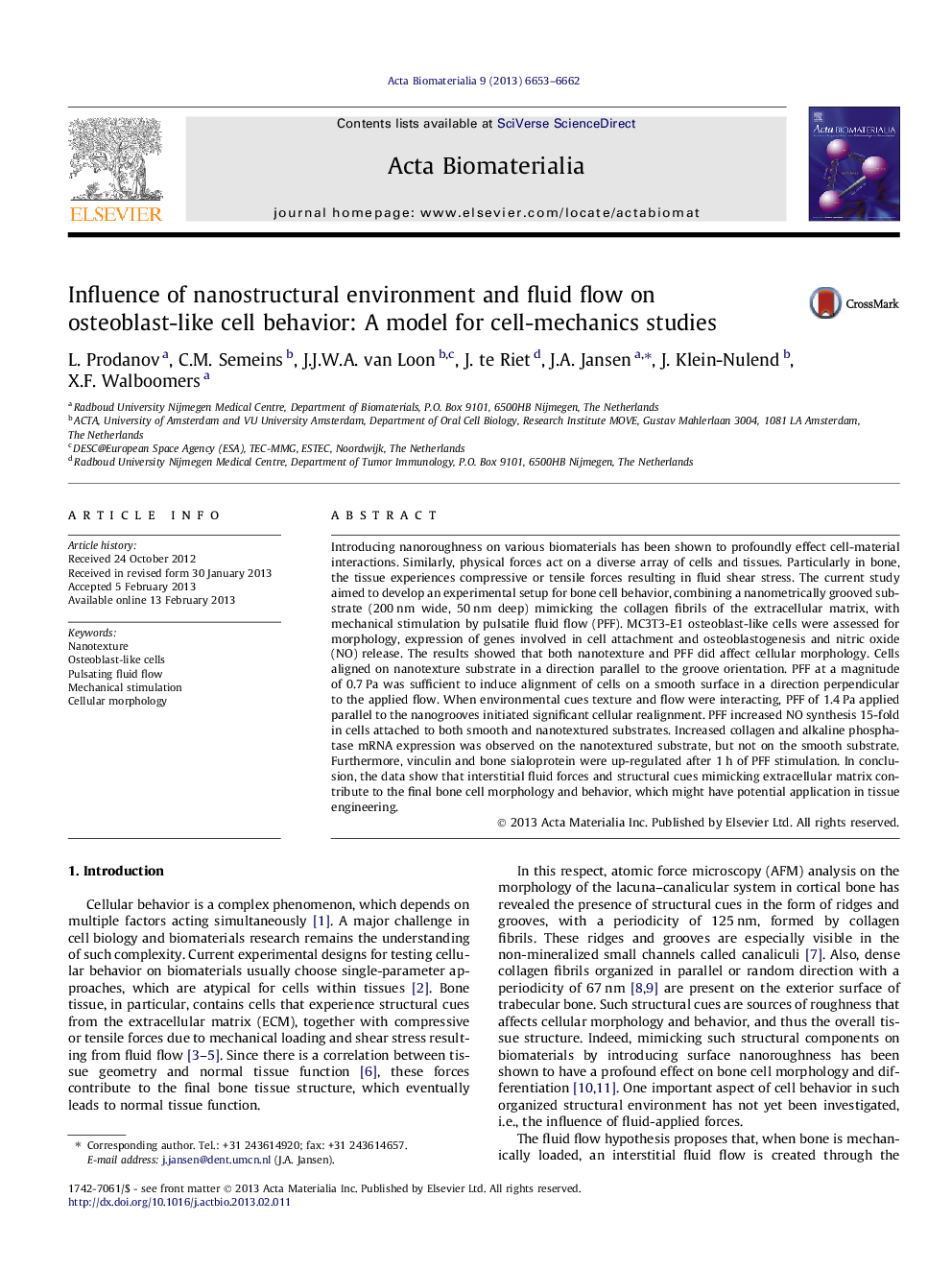| Article ID | Journal | Published Year | Pages | File Type |
|---|---|---|---|---|
| 10159946 | Acta Biomaterialia | 2013 | 10 Pages |
Abstract
Introducing nanoroughness on various biomaterials has been shown to profoundly effect cell-material interactions. Similarly, physical forces act on a diverse array of cells and tissues. Particularly in bone, the tissue experiences compressive or tensile forces resulting in fluid shear stress. The current study aimed to develop an experimental setup for bone cell behavior, combining a nanometrically grooved substrate (200Â nm wide, 50Â nm deep) mimicking the collagen fibrils of the extracellular matrix, with mechanical stimulation by pulsatile fluid flow (PFF). MC3T3-E1 osteoblast-like cells were assessed for morphology, expression of genes involved in cell attachment and osteoblastogenesis and nitric oxide (NO) release. The results showed that both nanotexture and PFF did affect cellular morphology. Cells aligned on nanotexture substrate in a direction parallel to the groove orientation. PFF at a magnitude of 0.7Â Pa was sufficient to induce alignment of cells on a smooth surface in a direction perpendicular to the applied flow. When environmental cues texture and flow were interacting, PFF of 1.4Â Pa applied parallel to the nanogrooves initiated significant cellular realignment. PFF increased NO synthesis 15-fold in cells attached to both smooth and nanotextured substrates. Increased collagen and alkaline phosphatase mRNA expression was observed on the nanotextured substrate, but not on the smooth substrate. Furthermore, vinculin and bone sialoprotein were up-regulated after 1Â h of PFF stimulation. In conclusion, the data show that interstitial fluid forces and structural cues mimicking extracellular matrix contribute to the final bone cell morphology and behavior, which might have potential application in tissue engineering.
Related Topics
Physical Sciences and Engineering
Chemical Engineering
Bioengineering
Authors
L. Prodanov, C.M. Semeins, J.J.W.A. van Loon, J. te Riet, J.A. Jansen, J. Klein-Nulend, X.F. Walboomers,
